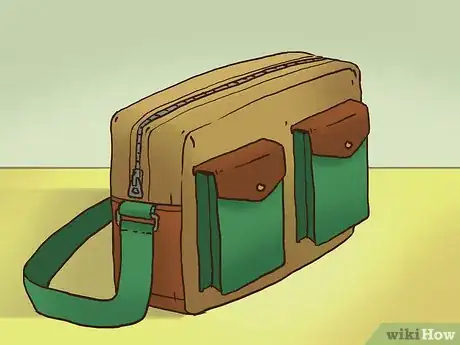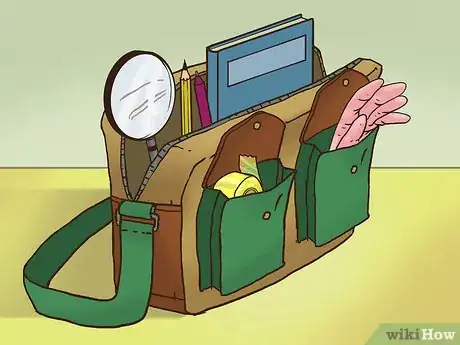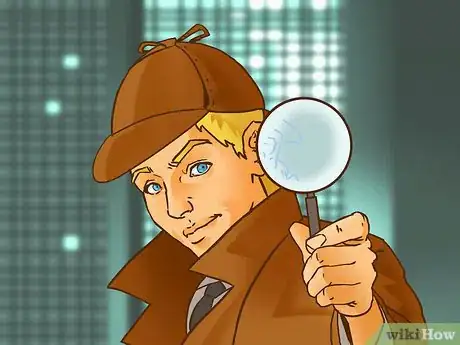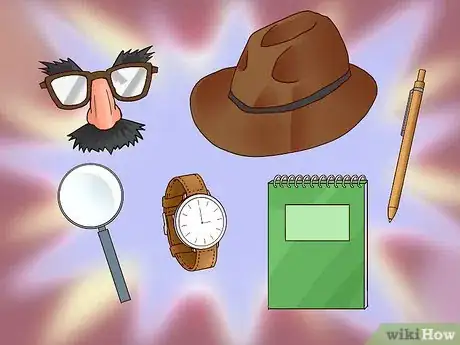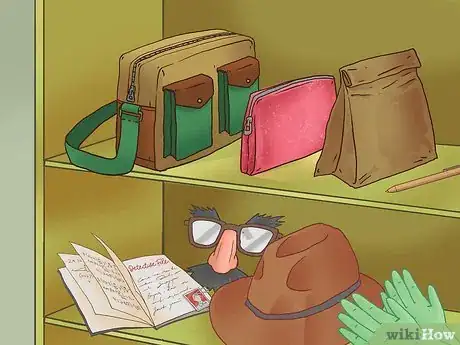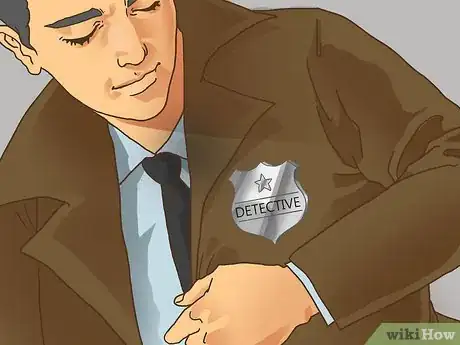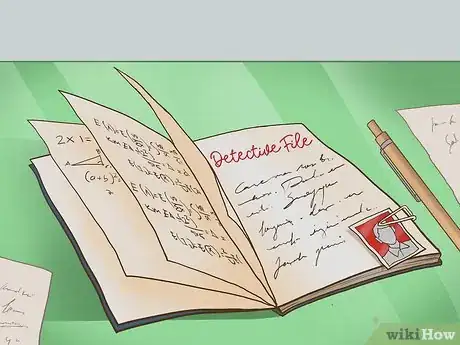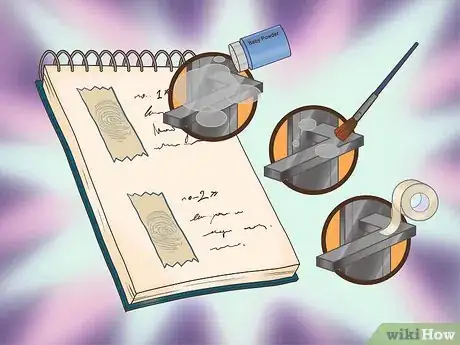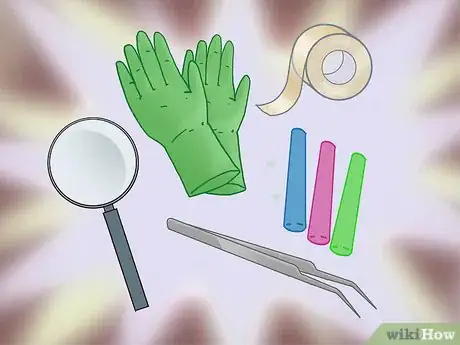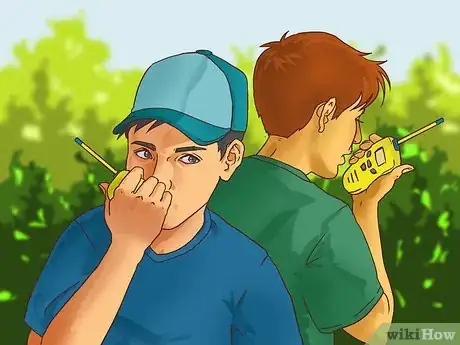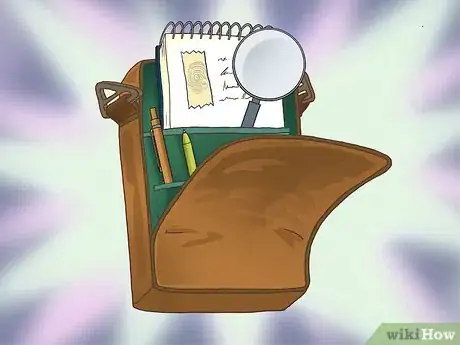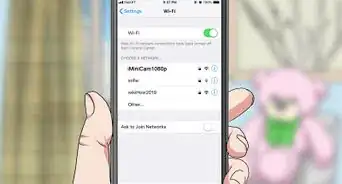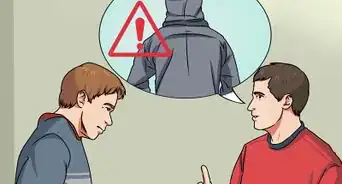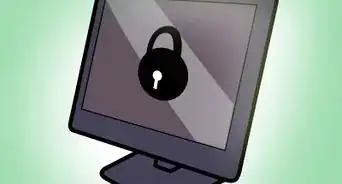This article was co-authored by wikiHow Staff. Our trained team of editors and researchers validate articles for accuracy and comprehensiveness. wikiHow's Content Management Team carefully monitors the work from our editorial staff to ensure that each article is backed by trusted research and meets our high quality standards.
wikiHow marks an article as reader-approved once it receives enough positive feedback. In this case, 86% of readers who voted found the article helpful, earning it our reader-approved status.
This article has been viewed 129,135 times.
Learn more...
Being a detective requires a lot of gear! You'll need to slip in and out of disguises at a moment's notice, track down evidence in the dark, and even take fingerprints from suspects. Putting together a detective kit is a great way to get started on spy work or even solving a mystery! Learn how to set up your bag, assemble disguises, and build the perfect crime-fighting kit.
Steps
Choosing the Right Bag
-
1Pick a large, sturdy bag. Choosing a bag big enough to carry all your detective gear is important--you can’t leave anything behind when you’re on the case! Try a duffel bag, laundry sack, or even a purse or briefcase.[1]
-
2Make sure your bag has pockets. A detective needs to be able to grab their tools quickly, without rummaging around. Your bag should have pockets, compartments, or some other way of organizing your things. If you can’t get a bag with pockets, try putting your things into smaller bags, like makeup or sandwich bags. Then, you can put the small bags into the larger one.[2]Advertisement
-
3Choose some backup bags for special missions. If you’re undercover as a hula dancer in Hawaii, carrying a briefcase will ruin your disguise! It’s a good idea to have a few extra bags as backup for undercover work. Try adding a beach bag, a purse, or even a paper grocery bag to your kit.[3]
Assembling Disguises
-
1Choose your regular detective gear. Every detective has a uniform that they wear every time they're on the job, except when they're undercover. Some detectives dress like police officers, while others dress in long coats like Sherlock Holmes. If you don’t have any of these, don’t worry--you can be a detective in any outfit you want![4]
- Darker clothes can help you blend in.
- Sunglasses or hats are a good way to hide your true identity when you’re on the job.
-
2Pick two or three aliases. Every good detective has a few disguises they use over and over again. Choose two or three to be your regular aliases. They should all be different from each other. For example, try having a football player disguise, a grandma disguise, and an artist disguise.[5]
- If you’re having trouble thinking of good disguises, use people you know as inspiration.
-
3Find supplies for each disguise. Each of your disguises should have at least three parts, so make sure you have enough supplies for each of your characters to have a full costume!
- The first part is something that goes on your head or over your face to hide your identity--wigs, sunglasses, or fake mustaches are a great choice.
- Each of your aliases should have their own costume. For an old man disguise, try suspenders and high pants. If you want to go incognito as a firefighter, get a yellow raincoat and black boots.
- Finally, your disguises will all need accessories. These will depend on your disguise. If you’re an artist, try a paintbrush. For a famous movie star disguise, try a feather boa.
-
4Keep each disguise separated. You may need to hop into your disguise at a moment’s notice. You can’t be rummaging around in your bag or putting on the wrong disguise! Each disguise should have its own pocket in your bag. If your bag doesn’t have enough pockets, keep each disguise in its own freezer or grocery bag.
Getting Detective Gear
-
1Make your badge. Every detective needs a badge to prove their identity. You can make a detective badge out of paper or cardboard. It should have your name and the name of your detective agency on it. If you want, you can cover it with aluminum foil so it looks like it’s made of metal.[6]
-
2Get a detective notebook. You’ll need a notebook to keep track of your clues and solve your cases. You can use any notebook you want, but be sure not to label it! It’s important that people don’t know it’s your detective notebook--you don't want suspects stealing it and looking at your secret evidence![7]
- Some detectives like to fill the first few pages of their notebook with random stuff, like drawings or math problems, and then start their detective notes in the middle. That way, anyone opening it won’t see your detective notes.
- You’ll also need a pen or pencil to write with.
-
3Set up your fingerprinting kit. A big part of detective work is gathering fingerprints. You’ll need a few things to have a really good fingerprinting kit. Make sure you keep your fingerprinting stuff together in case of emergency![8]
- You’ll need flour or baby powder to dust for prints. Dusting is easy--just gently sprinkle a little bit of flour or powder on the suspicious area, and then blow off any extra powder.
- Once you’ve dusted, use a makeup brush or a paintbrush to gently brush away the powder until you can see a fingerprint.
- Finally, take a piece of clear tape and press it down onto the print. When you peel it off, you’ll have a perfect fingerprint on the tape that you can study later.
- If you aren’t allowed to put flour or powder on things, you can use the tape to collect fingerprints from people you know--just have them press their fingertip onto the sticky side of the tape. Keep the tape in your detective notebook so you have a file on everyone’s prints!
-
4Gather supplies for an evidence-collecting kit. You may need to gather evidence that is fragile or hard to see. It’s important to have supplies on hand that will let you find evidence no matter what! Start by getting a few plastic baggies to hold your evidence.[9]
- Gloves will protect you from getting fingerprints on the evidence.
- A tape measure will help you measure the length of hairs or footprints you find.
- Tweezers can be used to pick up tiny pieces of evidence, like hair or an earring.
- A magnifying glass can help you see even the tiniest evidence, like dust or dirt. If you don’t have a magnifying glass, don’t worry--you can still be a detective without it.
- Keep some chalk on hand to outline evidence you find.
- Flashlights are essential for nighttime work!
-
5Get walkie-talkies if you have a partner. If there are other detectives in your agency, get some walkie-talkies so you can communicate quickly when you're on the case! It's okay if you can't get them, but it will make detective work a lot more fun.[10]
-
6Put everything together into your kit. Make sure that everything fits, and that you can find the things you need! If you use certain things more than others, like your notebook or magnifying glass, put them on the top.[11]
Community Q&A
-
QuestionHow can I make people trust me as a detective?
 Community AnswerShow them that you are a good detective and can always find evidence to prove things, and also give them an encouraging smile. That will make them feel comfortable to be around you, especially as a detective.
Community AnswerShow them that you are a good detective and can always find evidence to prove things, and also give them an encouraging smile. That will make them feel comfortable to be around you, especially as a detective. -
QuestionShould I put money in the kit? You know, just in case?
 Community AnswerUnexpected events happen all the time, so being prepared would be helpful. Just don't leave the kit lying around, for if the money is in it, and it gets stolen, it won't do you any good.
Community AnswerUnexpected events happen all the time, so being prepared would be helpful. Just don't leave the kit lying around, for if the money is in it, and it gets stolen, it won't do you any good. -
QuestionWhat do I do if I'm a child and I solve a case, but I don't want to tell the police?
 Community AnswerIf you find something illegal, it is best to get evidence to prove it, and contact the police. Never feel like the police won't listen.
Community AnswerIf you find something illegal, it is best to get evidence to prove it, and contact the police. Never feel like the police won't listen.
Warnings
- If you do come across an actual crime, let the police handle it!⧼thumbs_response⧽
References
- ↑ http://lets-explore.net/blog/2011/12/diy-gift-detective-kit/
- ↑ https://www.thebugoutbagguide.com/best-edc-bag/
- ↑ http://lets-explore.net/blog/2011/12/diy-gift-detective-kit/
- ↑ https://www.momsandmunchkins.ca/2014/05/17/detective-kit-for-kids/
- ↑ http://www.kidspot.com.au/things-to-do/activity-articles/diy-detective-play-kit-for-imaginary-fun/news-story/b999814ecd511050b594cd360a1e58fa
- ↑ http://makethebestofeverything.com/2011/01/homemade-detective-kit.html
- ↑ https://www.momsandmunchkins.ca/2014/05/17/detective-kit-for-kids/
- ↑ http://makethebestofeverything.com/2011/01/homemade-detective-kit.html
- ↑ https://www.momsandmunchkins.ca/2014/05/17/detective-kit-for-kids/
